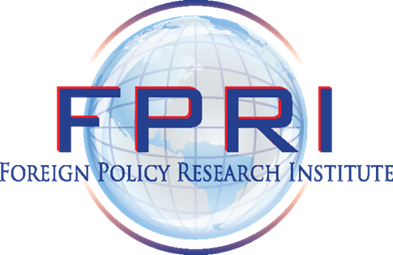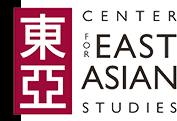A nation must think before it acts.
Report on a Study Trip to Japan for High School Teachers
Report on a Study Trip to Japan for High School Teachers
June 20 – July 4, 2016
By Paul Dickler
Sponsored by the Foreign Policy Research Institute and the Center for East Asian Studies, University of Pennsylvania
 |
 |
Supported by a Grant from the US-Japan Foundation
Study Trip Leaders
Frank Chance, Adjunct Professor of East Asian Studies, Upenn
and
Paul Dickler, Associate Director, FPRI Wachman Center for Civic and International Literacy
Project Supervisor
Jacques deLisle, Stephen Cozen Professor of Law, UPenn
Director, FPRI Asia Program
Director, UPenn Center for East Asian Studies
Our purpose in conducting this study trip was to deepen teachers’ understanding of Japan’s culture, history, and international relations through a two-week tour studded with briefings and cultural visits, and preceded by a series of online lecture specially designed for the group.
Eighteen teachers, drawn from all over the United States, were given $750 towards the cost of the round trip flight to Japan. Once in Japan, all hotel costs, food, internal transportation, and admissions were supplied by the grant. Additional educational materials and private political, economic, and educational visits and tours were arranged by the Foreign Policy Research Institute and the Center for East Asian Studies.
Prior to the two-week study tour, an on-line program of lectures/PowerPoints, readings, and recommended activities, were provided exclusively for study tour participants. Presenters included Jacques DeLisle, Director of FPRI’s Asia Program and Director of UPenn’s Center for East Asian Studies; Frank Chance, Linda Chance, Associate Professor of Japanese Language and Literature, UPenn; Mark Peterson, Professor of Korean Studies, Brigham Young University, and Senior Fellow, FPRI; Gilbert Rozman, Emeritus Professor of Sociology, Princeton University, and Senior Fellow, FPRI; and Shihoko Goto, Woodrow Wilson Center. Topics ranged from Japanese history and culture to politics and relations with China, Korea, and The United States.
In addition, we created a Facebook page specifically for the group, the FPRI Japan Teachers Workshop, featuring posts concerning everything Japan – before, during, and after the trip. Posts here range from a Penguin Park in Shinjuku, to the Nippon Kaifi Religious Group, to a dinner at Goichi Pizza in Kyoto, to Tower Records Japan (85 stores strong), to a fascination with Japanese toilets.
Japan has been the world’s second largest economy for most of the past three decades. Since the end of World War II, Japan has been protected militarily by the United States, and as a result focused its attention on the economy and other matters. However, the times are a-changing. China is now the world’s second largest economy, and it and North Korea have assumed aggressive postures towards Japan. Many in Japan now wonder if U.S. protection is sufficient. Japan’s commitment to peace since 1945 is self-evident, but should its constitution be changed to reflect the realities of the present uncertain times? Politics and economics are heavily intertwined as we look at Japan in the late 21st century. Yet, as modern a country as Japan is, one must be carefully grounded in Japanese culture and tradition to comprehend the manner in which political and economic changes unfold.
We arrived and departed from Narita, and utilized our Japan Railpasses (one week of the two-week tour), supplemented by additional train, bus, and taxi travel as needed. Accommodations included two hotels in Tokyo: the Shiba Park Hotel and the Washington Shinjuku Hotel. In addition, we stayed at the ANA Hotel Matsuyama in Matsuyama, Shikoku, the New Hiroden Hotel in Hiroshima, and the New Miyako Hotel in Kyoto. The 42 meals on this trip offered opportunities to experience local cuisine and customs, primarily together.
Tokyo was the first and last stop of our tour. It is the political center of Japan and a critical economic center as well. Tokyo afforded us cultural, political, and economic sites. Visits to the United States Embassy, the Japanese Ministry of Foreign Affairs, Boeing Japan, Parliament, Ginza, Asakusa Kannon Temple, the Meiji Shrine, and many other sites were conducted.
Briefings at the U.S. Embassy, the Ministry of Foreign Affairs, and Boeing Japan stressed the changing political and economic climate in Japan. While speakers at the Embassy and Ministry (Keiichi Iwamoto—Director of the Economic Partnership Division of the Economic Affairs Bureau, and Deputy Director Tomoko Kubo) were naturally circumspect, the spokespersons at Boeing were more direct. Understandably, U.S. officials would not go on record concerning political and economic policies of the Japanese government. Nor would they fully address the issue of the American military presence in Okinawa. The Japanese Ministry of Foreign Affairs was also similarly circumspect. Economically, Japan has been in a malaise since the early 1990’s. While it has certainly done well by most countries’ standards, the stagnation has seen other countries rise economically while Japan’s exports have had little upward momentum. Prime Minister Abe’s plans, “Abenomics,” are an effort to break free from this malaise. Thus far, his administration’s efforts have met with only minor success, but the stimulation to the economy is continuing, and better results may be forthcoming. Is Emperor Akihito’s announced abdication related to Abenomics? Boeing’s impressive presence in Japan and world-wide includes great participation with host country corporations. We could see evidence of Boeing’s presence in Japan as we traveled throughout the Kanto Plain. Ron Lopez (Director Asia Pacific Business Development Network and Space Systems) and Matty Matsumura (Senior Director Japan International Business Development Defense, Space, & Security) vividly described Boeing’s operations and influence. Boeing expects its American employees to be conversant in American history and politics. Science alone is not enough.
Our time in Tokyo also afforded participants a chance to familiarize themselves with the vast Tokyo subway system. As we traveled throughout the city to its many different regions, Japanese culture and traditions were always on display. Obedience to the law, concern for the environment, cleanliness, bowing, following procedures—these behaviors were an integral part of life in Japan. Foods from makizushi (sushi) to sashimi, ramen to soba and udon, mochi to oden, yakitori to tempura, and miso soup to edamame, delighted our taste buds. Visits to the Tokyo-Edo Museum and to the Shinjuku Prefecture Building afforded insights into history and urban geography. From the Tokyo Character Street to the Sumo Wrestling Museum to the Meiji Shrine, participants delighted in all things Japanese. Most of the participants did Karaoke after a group dinner. Several went to a professional baseball game featuring the Tokyo Yakult Swallows. (The Yomiuri Giants were playing in Yokohama that night.)
After leaving Tokyo, we initially turned to a cultural emphasis, going to Matsuyama in Shikoku. The Shinkansen trip was fast and stimulating. We viewed dozens of cities, villages, rice fields, factories, and mountain views, including Mt. Fuji. Even the slower train on Shikoku to Matsuyama was quite fast by most standards. Our visit to Dōgo Onsen in Matsuyama, allowed us to experience one of the most famous hot springs baths in Japan. Dōgo Onsen has been in use for over 1,000 years. This cultural and most pleasurable experience reminded us of the animated film Spirited Away, which was modeled after this onsen. Cleanliness and ritualized behaviors were cultural attributes experienced first hand. Matsuyama Castle, overlooking Maysuyama and the Inland Sea, offers a primer on defense tactics and a personal view into centuries of Japanese history. The street fair in Matsuyama also afforded participants the chance to see contemporary Japanese tastes and styles, while also celebrating traditional clothing.
Using our JR Railpasses, we journeyed on to Hiroshima where politics, history, and education dominated our stay. Visiting the bomb site, Hiroshima Peace Memorial (Genbaku Dome), and the Peace Museum, as well as hearing the testimony of a survivor, were for many the highlights of the study tour. Discussions about wartime decisions were mixed with the realities of nuclear threats facing Japan today. The debate over Article 9 of the Japanese Constitution (originally drawn up by a committee of Americans after World War II), was especially poignant in Hiroshima. We also visited the memorial to “Korean Workers” at Hiroshima—or what Koreans call slave labor—and its attendant controversies. Modern Hiroshima offered a sharp contrast to the dark history from the previous century. The culinary specialty of Hiroshima, Okonomiyaki, was a great delight to many in the group, especially this writer who ate two at one sitting. We also visited one of the best girls’ schools in Japan — Hiroshima Jogakuin. We toured the school and met with teachers and students. This frequent interaction with Japanese citizens, is also a highlight of our study tour. Our banquet dinner that we held in Hiroshima, afforded us a chance to meet with English teachers and other local citizens and discuss a wide range of issues.
At our fourth stop, Kobe, the focus was on economic development. We toured Kobe port by boat as the guests of the Kobe City Government, to observe ship building, heavy industry, and the development of modern sites for tourism. We visited the Disaster Reduction and Human Renovation Institution: Kobe Earthquake Museum, and Fukiai High School. Again as guests of the Kobe City Government, all fees were waived, a bus was provided for our group, and we were treated to a gourmet Korean lunch with great views of the city. The Deputy mayor addressed our group. We visited a beautifully developed port-side shopping district before our cruise. All agreed it would have been great to stay longer in Kobe.
From Kobe we used our Railpasses to arrive in theamazing train station of Kyoto. Looking like a set from Blade Runner or other futuristic films, the modern side of Kyoto was on display. The New Miyako Hotel offered further evidence of a most modern Kyoto. Of course, our main mission in Kyoto was to visit religious and cultural sites. Kyoto remains the most essential place to see cultural history of the country. From Shinto shrines to Buddhist temples, Kyoto offered a window into Japan’s past and spiritual present. Sites visited included Sanmon Gate at Tofukuji, Kinkakuji, Ginkakuji, Kiyomizudera, Arashiyama, Nijo Castle-Palace, Fushimi Inari-taisha, and Ryoan-ji, with a Zen meditation session at the Shunkō-an subtemple of Myōshinji. Teachers attempted to model Zen meditation led by a master.
Upon our return to Tokyo at the height of rush hour, we arrived at the world’s busiest train station, Shinjuku, with all our luggage. We managed to check in to the Shinjuku Washington Hotel in time for dinner and evening activities. In addition to visiting Asakusa and Shinjuku, there were many options available for teachers to explore Tokyo. Some went to the Tsujiki Fish Market. Others went to the National Muesum or the Tokyo Tower. Still others went to Ginza or Shibuya or Roppongi. Even a visit to the controversial Yasukuni Shrine was possible. Some ate fresh-baked Japanese breads at Mitsukoshi’s basement. Of course, we all saw Godzilla visiting high above Shinjuku!
On our last full day in Japan, we journeyed to Nikkō by train. Nikko is home to a mausoleum site dedicated to the first shogun of the early modern era, and a popular tourist destination today. In the Edo period, visits there were required of all the daimyo warlords, and many of their retainers. We, however, did not require all teachers to journey to Nikko. Several visited additional sites in Tokyo. In all, the FPRI/CEAS Japan Study Tour participants walked over 100 miles during the 14 days!
During our study tour, we learned the great Japan scholar G. Cameron Hurst III died. He was part of both CEAS and FPRI and will be missed by us all.
As teachers begin to teach their new Japan topics and courses, they are also expected to participate in transmitting their knowledge and lesson plans to other teachers through internal school meetings and at teaching conferences. The CEAS and FPRI project staff have invited participants to all events related to Japan at Penn and elsewhere, offered videos and materials, and offered to send faculty and graduate student lecturers to speak to their students. FPRI and CEAS will post lesson plans on our websites after receiving the lessons from all participants. In addition, some teachers will hold educator workshops at their schools, some will arrange special events engaging teachers and students, and others will form clubs as well as teach courses. Teachers will be encouraged to present papers on their lessons at academic and pedagogical conferences. We will continue to share suggested readings. An example would be June Teufel Dreyer’s crictically acclaimed new book, Middle Kingdom & Empire of the Rising Sun, on the history of Sino-Japanese relations.(She is a Senior Fellow of FPRI.)
Final conclusions about Japan’s political and economic future will vary among participants. What seems certain is that anyone betting against Japan will lose. Their economy may continue to stagnate, but it will still be world-class and powerful. Their government will probably steer Japan into full normalcy in defense and military matters. Full cooperation and coordination with the United States is likely to continue for many years.
Participating Teachers
Ana Baker, Wauwatosa West HS, Wisconsin
Amy Brady, Henry County HS, Georgia
David Burton, South Moore HS, Oklahoma
Natsuko Buustra, Princeton HS, New Jersey
Shayne Dove, New Beginnings HS, Michigan
Tamasine Ellis, The Kincaid School, Texas
Katherine Hagee, Rolling Hills Prep School, California
Dave Harycki, Wayne State College, Nebraska
Michelle Heim, St. Joseph’s School, Wisconsin
Kelsey Hudson, Valley HS, Iowa
Donald Jenkins, Oak Harbour MS, Washington
Padi Kong, Wauwatosa HS, Wisconsin
Shane Lesher, Burlington County Institute of Technology, New Jersey
Chelsea Maxwell, Los Alison Intermediate School, California
Rachelle Myllymali, Middleton HS, Rhode Island
Katie Schmoldt, Timpview HS, Utah
Evan Sellers, West Florence HS, South Carolina
Susan Tornatore, NY School, New York
List of Briefings available to teachers before the trip, available to everyone now
Japan’s Place in Asia and the World: The Long Path to the Current Crossroads
Jacques deLisle, Director, FPRI Asia Program
Resilience and Regeneration: Japan’s Economic Challenges and the Road Ahead
Shihoko Goto, Senior Associate for Northeast Asia, Asia Program, Woodrow Wilson International Center for Scholars
Japanese Culture in a Nutshell; Kyoto: Brief History of a City
Frank Chance, Adjunct Professor, East Asian Languages and Civilizations, UPenn
Japanese Language, Literature, and Culture
Linda H. Chance, Associate Professor of Japanese Language and Literature, East Asian Language and Civilizations, UPenn
Korea and Japan: An Unhappy History. Relationships of Ups and Downs, Mostly Downs
Mark Peterson, Brigham Young University
Japan in Focus
Gilbert Rozman, Professor Emeritus, Princeton University
All videos posted here and on our YouTube Channel.





